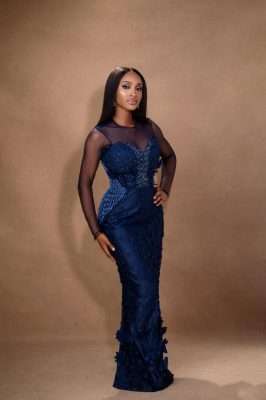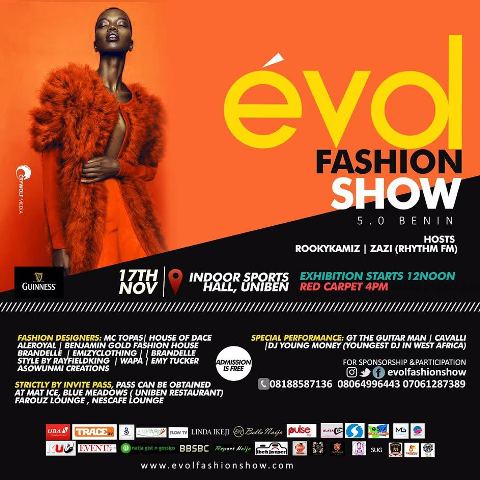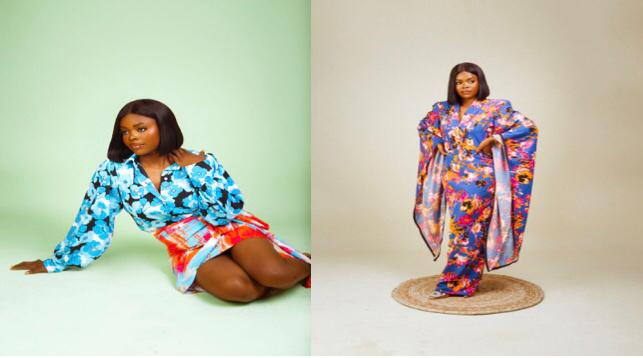Owambe Extravaganza: Styling Party Outfits the Nigerian Way

When it comes to the party lifestyle and showing up in grand styles, Nigerians take the Grammy.
If you’ve ever set foot in this boisterous corner of the world, you’d know that in Nigeria, every milestone isn’t just celebrated — it’s a full-blown spectacle! Nigerians don’t just mark occasions; they elevate them into unforgettable experiences ― each one bigger, bolder, and more dazzling than the last.
In this part of the hemisphere, life’s milestones are not just events; they’re grand productions that allow people to step into realms of celebration.
Nigerians don’t do anything halfway. From weddings that look like something out of a movie to house-warming parties that could pass for a music video, or whether it’s the birthday of a one-year-old baby, rest assured that it is often accompanied by many showstoppers or what Nigerians would refer to as “Slay queens and kings” ─ or sometimes as “Pepper dem gang”.
These sets of individuals are excellent cheerleaders, always looking stylish and trendy in their outfits, not to mention that they are ever available to attend weekend events that Nigerians have crystalized as “owambe”.
The urban dictionary defines owambe as a large, grandiose party organized and mostly attended by Nigerians. A term coined by the Yorubas, the western tribe of the country, a typical owambe must involve loud music, lots of food and drinks, and some “spraying” of the naira on the celebrant or the most impressive person at the event.
This epic gathering is the heartbeat of Nigerian social life and everyone is expected to deck out in matching attires known as “Aso-Ebi”.
When you see those coordinated colors flooding the hall, you know it’s about to be lit! The camera flashes; the gossip and the side-eyes — are all part of the Aso-Ebi drama. And if you’re rocking the chosen fabric, you’re automatically a VIP, with no need for further explanations.
Think of Aso-Ebi as flashy and expensive laces, bold print Ankara and complimenting head gears referred to as “Gele” with that “Can’t-tell-me-nothing” attitude. Nigerians don’t just dress to impress; they dress to shut it down! Aso-ebi is more than a piece of clothing; it is a whole vibe, a symbol of unity, and the ultimate fashion statement at any Nigerian owambe.
Speaking of fashion statements, we saw quite a lot at the 2021 Trio Elegance Fashion Exhibition, a showroom for voguish Nigerian Aso-Ebi styles. We were stunned to our teeth. From the measurement to the trims, colour choices and fits; the quality of fabric and finishing touches, every sentence was loud.
The Trio Elegance Fashion Exhibition is an exciting event launched by Olamide Afsat Adams the creative force behind Fabric Etcetera. This exhibition not only brings out the glitz and glamour of the Nigerian style to life, it shows how Africans express themselves through fashion, making every event feel like a red-carpet moment. Inspired by the owambe culture, where traditional Nigerian party fashion meets contemporary style, each of the three looks in this collection is carefully designed to capture the essence of a true party guest.
Although a trio, we couldn’t miss the additional information on the length of these two fabulous fashion commands: Dress Tiwa and Dress Teni.
We’ll begin with the extraordinary Dress Tiwa.
What is a Nigerian wedding without this buoyant-coloured masterpiece that can pass for a high school prom dress?
Made to reflect the classic elements of Yoruba party attire, this dress is lavished with the veteran Aso-Oke, lace, and detailed beadwork.
Originating from southwestern Nigeria, Aso-oke has long stood as a symbol of prestige and tradition, dating back to the 15th century. Its rich textures and skilled craftsmanship showcase the talent and heritage of Yoruba weavers, solidifying its status as a legacy in Nigerian fashion.
The embellishments on the upper body are exquisite, showcasing detailed beadwork that adds a luxurious texture and sparkle. The placement of the beads is generally well-executed, making this section appear like a network of vehicles congregating before a traffic signpost.
The off-shoulder neckline and puff sleeves evoke a sense of lasting glamour, blending vintage elegance with a modern twist.
The fit of this outfit is meticulously tailored, hugging the model’s silhouette perfectly while offering just the right amount of structure and movement.
A well-contoured bodice, each curve enhances the wearer’s natural shape without revealing too much.
This deep margenta color gown is bold and sophisticated, providing a striking contrast against the model’s skin tone. The model’s make-up, with its vibrant eye shadow and polished finish, complements the dress without overshadowing it.
The model’s sleek and straight hair is another fitting choice, maintaining a clean and polished aesthetic that allows the dress to remain the focal point.
While the hairstyle works just well, an alternative like the iconic ponytail or bob (chin length) hair extension can further highlight the well-thought trims and skin shade net, offering her shoulder and neck regions a more elevated presentation.
Plus, they could totally enhance the outfit with some fabulous headgear, often referred to as ‘Gele’, adding a vibrant touch that is hard to resist.
Moving downward, this over-flowing mermaid outfit is flawless, creating a dramatic yet elegant line that elongates the wearer’s figure 8. The structured bodice and flared skirt are beautifully balanced.
The cuts are sharp and thoughtfully placed, too, giving the hems and edges a pronounced finishing touch.
Overall, this look is a masterful. From the combination of different fabrics to the bonanza on the design, Dress Tiwa is not a wardrobe option but a “must-have”, especially if you want to give the owambe vibe whenever you step into the show.
Something Similar: The Dress Teni
The immortal slit dresses!
On the day of Olamide’s exhibition, fashion devotees like us couldn’t stop gushing over this finished art composition. Indeed, the Dress Teni stole our hearts.
The legendary leg-baring slit made its first dramatic entrance in 1954 with Christian Dior’s daring H-Line collection. Dior’s innovative designs, characterized by sleek parallel lines, captivated the fashion world and redefined elegance with a touch of boldness.
This initial flirtation with the slit skirt set the stage for a trend that would only grow in popularity, becoming an eternal feature in fashion that continues to embody confidence and allure.
From red carpets to runways, the slit remains a statement of sensuality, proving that sometimes, just a hint of skin can leave the strongest impression.
Since the little opening is what caught our attention, we will begin from the bottom.
The shoes: Checked. ✔
The colour of royalty, these purple kitten heels are a perfect blend for the net-like material, plastered with 3D bold purple petals and a touch of light sea-green flowers.

Olamide, like the Tiwa’s Dress, combined this flowery net with an earthy-colour dull face fabric to conceal unnecessary revelations.
This combination made it possible for her designs to have a sanding-out ovation.
Another flowing gown, this up-to-the-thigh slit is crowned with a one-side peplum bodice, giving the model just the right amount of front, sides and behind reviews.
A sleeveless silhouette, this simple yet stylish wear is a match for any type of make-up. Do you like it bold and heavy or light, this dress helps you to communicate all the statements that are yet to be said.
The bra-length hair is proof that styles like these are for the rich and well-connected aunties in Lagos.
With designers like Olamide Afsat Adams, every event is an opportunity to add your 1% to the bank account of trendy fashion.
Whether it’s the dramatic slit of Dress Teni or the intricate embellishments on Dress Tiwa, these pieces remind us that Nigerian fashion is not just about looking good — it’s about turning heads, commanding attention, and celebrating life in the grandest way possible.
So, if you’re ever lucky enough to be part of an owambe, remember this: show up, show out, and let your outfit do the talking. Because in Nigeria, clothes aren’t just worn — they are a means of communication.
Keep it loud.








